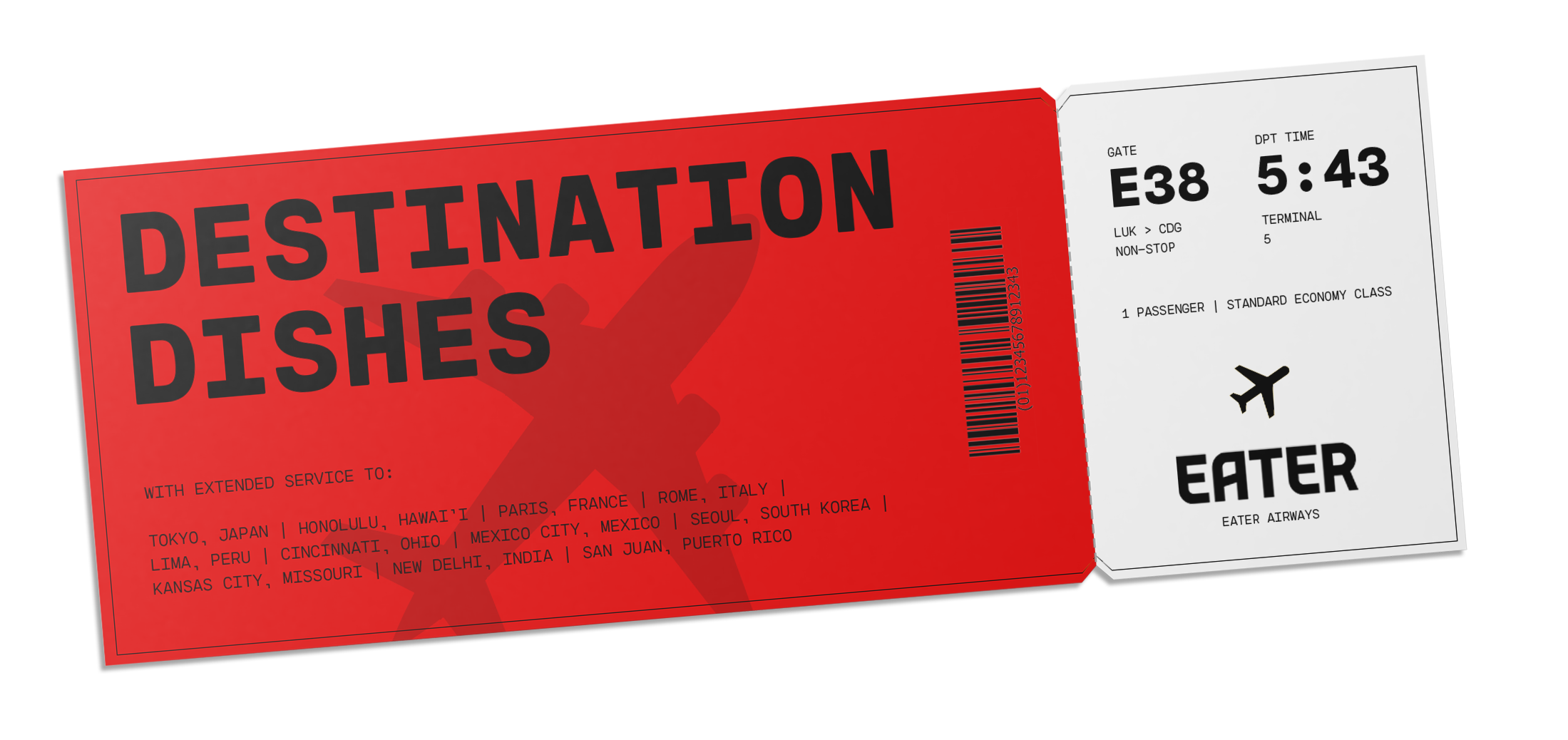The origins of chaat — a vast family of hundreds of snack dishes that translates literally to “lick” in Urdu and Hindi — remain debated, but Delhi supposedly got a taste for chaat in the 17th century. The story goes that the city’s residents fell ill, possibly from water pollution in the Yamuna river, and Delhi’s Mugal emperor, Shah Jahan (also known for building the Taj Mahal) ordered his courtly hakim (doctor) to instruct the cooks of the city to devise spicy, tangy dishes that could kill the bacteria sickening the populace. Whether or not modern chaat truly descends from this prescription, the cuisine has spread far and wide, creating various dishes in its wake while maintaining certain core principles.
Chaat usually consists of a base of fried ingredients — potatoes, papdi (wheat flour crackers), tikkis (flattened lentil discs) — which are tossed in chutneys like pudina (mint) and saunth (dried ginger and tamarind), and garnished with a custom chaat masala (spice mix), lemon, and herbs. Yet, it remains the most untranslatable branch of South Asian cuisine. Perhaps this is because the flavors are so cleverly balanced that no one has dared entirely demystify them. Or it’s because chaat is usually eaten in crowds or on the go, and so prevents any meditative deconstruction. But perhaps chaat remains entirely elusive from categorization primarily because it is a South Asian cuisine born from whim and is ever-changing. Each plate of chaat can be different from the last, flavored with a secret spice mix devised by a proud chef. There are millions of chaat dishes across India, especially in Delhi, where chaat lives a fluid, fruitful life.
This list excludes pakoras (fritters made from vegetables and lentils), samosas, and kachoris (deep fried snacks filled with onions, potatoes and lentils) because those are entirely different subsects of Indian cuisine and would make this list exhaustingly long. Instead this list offers a guide through the classic and newer elements of chaat that make up Delhi’s culinary landscape.
Sharanya Deepak is a writer and editor from and currently in New Delhi, India. You can read more of her work on her website.
Read More
/cdn.vox-cdn.com/uploads/chorus_image/image/67553899/FullTable_AleppoSupperClub_2.14.jpg)
/cdn.vox-cdn.com/uploads/chorus_image/image/54890211/shutterstock_1032908740.1509553922.jpg)
/cdn.vox-cdn.com/uploads/chorus_image/image/73282725/_DSC9433.0.jpg)
/cdn.vox-cdn.com/uploads/chorus_image/image/71003380/IMG_4682_photo.0.jpeg)

/cdn.vox-cdn.com/uploads/chorus_image/image/65435137/chandi_chowk_cover.0.jpg)
:no_upscale()/cdn.vox-cdn.com/uploads/chorus_image/image/71003320/196A4558a.0.jpeg)
:no_upscale()/cdn.vox-cdn.com/uploads/chorus_image/image/71003361/196A4381.0.jpeg)